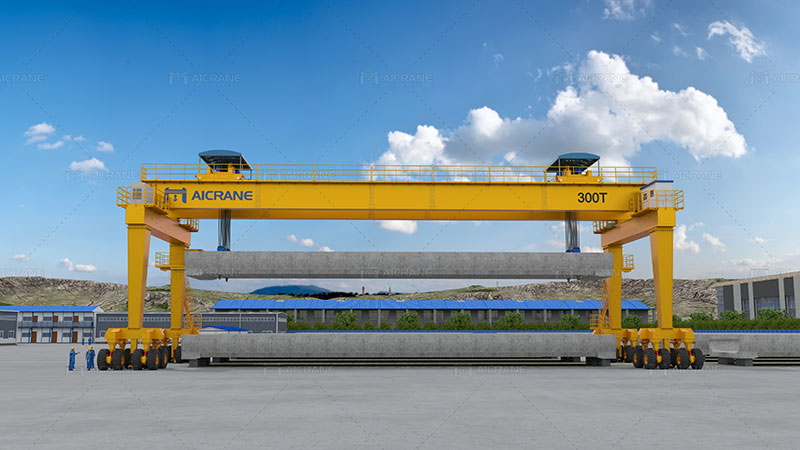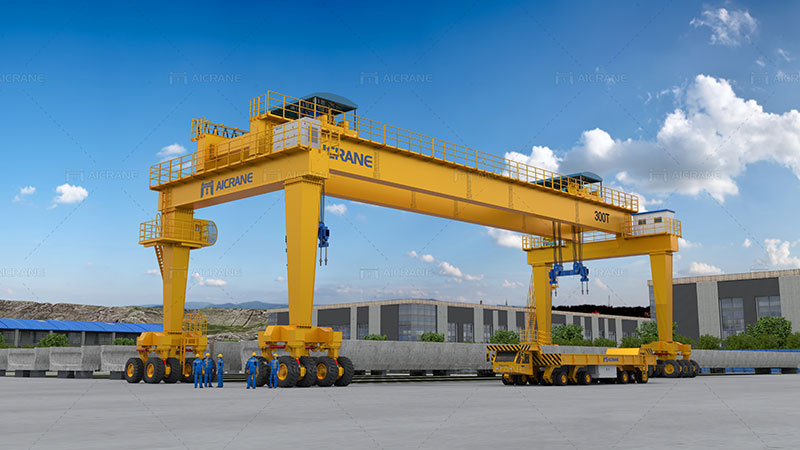The construction industry has undergone significant advancements over the years, and one of the most notable innovations is the use of rubber tyred gantry cranes (RTGs) for lifting heavy concrete beams. These versatile machines have transformed the way construction projects handle large concrete components, offering efficiency, precision, and safety that were once hard to achieve. In this article, we will explore the essential features and benefits of rubber tyred gantry cranes in the context of lifting concrete beams, shedding light on how they have become indispensable assets in modern construction projects.
Understanding Rubber Tyred Gantry Cranes
Rubber tyred gantry cranes, also known as RTGs, are mobile gantry cranes equipped with rubber wheels, allowing them to move freely on solid surfaces. These cranes are commonly used in container yards for handling shipping containers, but their adaptability and versatility have led to their adoption in various other industries, including construction.

Key Features of RTGs
Mobility: The rubber wheels of RTGs enable them to move easily across construction sites. This mobility allows for flexible positioning, making it easier to access different parts of the site and reach concrete beam installation locations quickly.
Heavy Lifting Capacity: RTGs are designed to handle substantial weights, making them ideal for lifting large concrete beams. Their lifting capacity typically ranges from 50 to 200 tons, depending on the specific model and configuration.
Precision Control: These cranes are equipped with advanced control systems that allow operators to maneuver with precision. This level of control is crucial when positioning concrete beams accurately, especially in tight or congested spaces.
Stability: RTGs are engineered for stability and can operate on uneven terrain. This is particularly important when working on construction sites where the ground may not always be level.
Safety Features: Safety is a top priority in construction, and RTGs are equipped with features such as anti-sway systems and load monitoring to prevent accidents during lifting operations.
Benefits of Using RTGs for Lifting Concrete Beams
Efficiency: RTGs can significantly speed up construction projects by reducing the time required for handling and installing concrete beams. Their mobility and precision ensure that beams are delivered to their exact locations swiftly.
Versatility: These cranes are not limited to lifting concrete beams alone. They can also be used for other heavy lifting tasks, such as positioning precast panels, steel structures, and other construction materials.
Cost Savings: The efficiency and versatility of rubber tyred gantry cranes can lead to cost savings in labor and project timelines. Fewer man-hours are needed for lifting and positioning, which translates to reduced labor costs.
Improved Safety: The advanced safety features of RTGs minimize the risk of accidents during lifting operations. This, in turn, reduces the potential for injuries and property damage, enhancing overall safety on the construction site.
Adaptability to Site Conditions: RTGs can adapt to various site conditions, making them suitable for both urban and remote construction projects. Their ability to operate on uneven terrain ensures that they can be used in a wide range of construction environments.
Reduced Environmental Impact: Some RTGs are powered by eco-friendly electric systems, reducing emissions and the environmental footprint of construction projects. This aligns with the growing emphasis on sustainable construction practices.

Case Studies: Real-World Applications
Bridge Construction: RTGs have proven invaluable in bridge construction projects. They can efficiently lift and position massive concrete beams, which are critical components in bridge infrastructure. Their precision and mobility ensure that beams are placed accurately, contributing to the structural integrity of the bridge.
High-Rise Building Construction: Tall skyscrapers often require the use of precast concrete beams to support the weight of the building. RTGs are used to lift and position these beams at various levels, allowing for efficient construction without the need for extensive scaffolding.
Industrial Facilities: Manufacturing and industrial facilities often use RTGs to handle heavy machinery components, including concrete beams used in the construction of factory structures. The speed and precision of RTGs minimize downtime during construction.
Challenges and Considerations
While rubber tyred gantry cranes offer numerous advantages for lifting concrete beams, there are some challenges and considerations to keep in mind:
Site Preparation: Ensuring that the construction site is adequately prepared for the operation of RTGs is essential. This includes providing stable ground and clear pathways for crane movement.
Operator Training: Skilled operators are crucial for the safe and efficient use of RTGs. Proper training and certification are necessary to minimize the risk of accidents.
Maintenance: Regular maintenance of rubber tired gantry cranes is essential to ensure their continued reliability. Any mechanical or electrical issues should be addressed promptly to prevent downtime.
Cost: While RTGs can lead to cost savings in the long run, the initial investment in these machines can be substantial. Construction companies should carefully evaluate the return on investment over the project’s lifespan.
Conclusion
Rubber tyred gantry cranes have revolutionized the construction industry by providing a versatile and efficient solution for lifting concrete beams and other heavy construction materials. Their mobility, precision, and safety features make them indispensable assets on construction sites, contributing to faster project completion, cost savings, and improved overall safety. As construction projects continue to evolve, the role of RTGs in the industry is likely to grow, further enhancing the efficiency and effectiveness of modern construction practices.